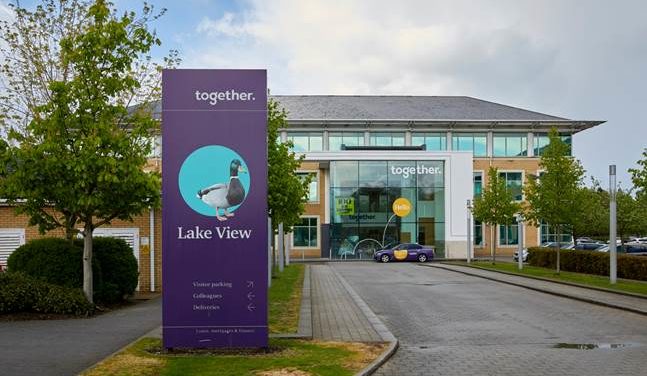Assessment of the main political parties’ manifesto pledges on housing
By Bridging Loan Directory
On December 12th, UK citizens head to the ballots to cast their votes in an historic General Election.
It is difficult to predict the outcome we might expect on the morning of Friday 13th; polls can change quickly, as we observed in the run up to the 2017 election. Back then, Labour received a big boost after its manifesto launch, and the Conservatives’ social care policy U-turn almost certainly contributed to the party’s failure to secure a majority.
The new Government’s housing policy will have a significant impact on the specialist lending industry. At Oblix Capital, we have summarised the main parties’ positions on housing in general, and Permitted Development Rights.
Manifesto headlines – new builds
The Conservative manifesto includes a target of 300,000 homes a year by the mid-2020s to achieve at least a million new homes of all tenures over the course of the parliament. The party has also confirmed it would introduce an ‘infrastructure first’ planning policy – in which schools, roads and GP surgeries are built before people move into their new homes.
Labour plans to build 100,000 council houses a year by 2024, focusing on brownfield sites and unused publicly owned land. This will be funded by a £150 billion social transformation fund which would be borrowed over the five-year period. Labour also pledges that housing associations would deliver an additional 50,000 ‘genuinely affordable’ homes each year.
The Lib Dems have pledged to build 300,000 new homes each year to tackle the housing crisis, 100,000 of which would be new social homes built to net-zero housing standards.
Other manifesto pledges
The manifestos also include details on other aspects of building, in particular Permitted Development Rights (PDR).
In October, housing secretary Robert Jenrick revealed that the Conservatives may tighten up Permitted Development via a process called ‘permission in principle’ – which gives planning authorities more power to influence the design of new buildings.
This follows concerns by the Local Government Association that communities have lost out on 10,500 affordable homes in the last few years, while most councils in England said they had concerns about the quality, design and location of these developments.
Jenrick stated that PDR has created between 30,000 and 50,000 new homes, although he admitted that some of these developments had been ‘poor quality’.
In their manifesto, the Conservatives propose the right to build upwards – supporting a new right to create homes by expanding commercial or residential buildings upwards. They also plan to take forward recommendations made by the ‘Building Better, Building Beautiful Commission’ to deliver beautiful settlements on three scales:
- Beautiful buildings with consideration of windows, height space and materials
- Beautiful places with consideration of streets, squares and parks
- Beautifully placed buildings with sustainable settlement patterns
The Conservatives have also pledged:
- Non-UK nationals buying properties in England would pay 3% more stamp duty than UK residents, a policy the Conservatives argue would help ‘take the heat out of the property market’ to make it easier for people to buy
- Protecting and enhancing the Green Belt by promoting biodiversity, prioritising brownfield development
- Ending no-fault evictions of tenants
Labour has long been opposed to permitted development rights. In its manifesto, the party confirmed it would end permitted development rights if it were to form a Government stating, “We will end the conversion of office blocks to homes that sidestep planning permission through ‘permitted development’.”
The manifesto also reveals plans to make 27 million homes more energy efficient through The Warm Homes For All Scheme. The plan, which is estimated to cost about £250 billion, would be partly funded through public subsidy, while the rest would be funded through government loans which would be repaid through energy savings. Labour argues this could save homeowners and tenants an average of £200 a year in energy costs.
Labour has also pledged they would:
- Introduce a new £1 billion Fire Safety Fund which would fund new fire safety measures to high-rise buildings owned by councils or housing association, following the catastrophic Grenfell Tower fire which claimed the lives of 72 people in June 2017
- Link the definition of ‘affordable housing’ to local income
- Create an English Sovereign Land Trust to make more land available more cheaply
- Halt the sale of 50,000 social rented homes a year
- Introduce a levy on overseas companies buying housing
- End the sale of new leasehold properties
- Abolish the Spare Room Subsidy (otherwise known as the Bedroom Tax)
- Introduce rent controls, open-ended tenancies, and binding minimum standards
- Build a million new affordable homes over the next decade
The Liberal Democrats have also confirmed they would end office-to-residential developments if they were to form a Government.
A spokeswoman for the Lib Dems said this pledge applied to the whole of the UK and that there would be plans to ‘reform plans to ensure developers are required to provide essential local infrastructure’.
Stopping Brexit and revoking Article 50 is at the heart of the Liberal Democrats’ manifesto, but the party is also clear about the need for housing reform – including reversing some of the policies introduced during the Conservative/Lib-Dem coalition. For example, it plans to abolish the Spare Room Subsidy, which the current leader, Jo Swinson, had previously supported under the coalition.
The Liberal Democrats also include proposals for:
- Allowing local authorities to raise council tax by up to 500% for homes which are left empty for at least six months
- Increasing Local Housing Allowance in line with average rents in an area.
- Devolving full control of Right to Buy to local councils.
Previous housebuilding performance
All three party manifestos promise a lot of change for the industry. The past, however, can give some indication of how much credence these commitments should be given.
UK housebuilding peaked under Labour’s Wilson Government in the late 1960s, with 425,830 new homes built in 1968. Since then, the number of new houses built each year has fallen dramatically.
Under the David Cameron’s Conservative Government, housebuilding fell to an average of 123,650 a year in England and Wales – the lowest rate since the 1920s. This compares to 160,838 during John Major’s premiership, while Margaret Thatcher’s Government built 190,974 a year.
Earlier this month, the Ministry of Housing, Communities and Local Government revealed that only 6,287 council homes were built in 2018-2019, which is the second-lowest level in peacetime history. However, 241,130 houses were built overall in this period, which is the highest level since 1991.
From a Labour perspective, between 1997 and 2010 the Blair and Brown Labour Governments built 2.61 million new homes, of which only 0.3% were social housing, although 350,000 new housing association dwellings were built during this period.
The Liberal Democrats were part of the Conservative/Lib Dem coalition that introduced permitted development rights, which was then expanded to allow commercial units to be converted for residential use without planning permission. In their 2010 manifesto, the Liberal Democrats pledged a 1% mansion tax on properties valued at £2 million or more, which was not implemented by the coalition. However, they did pledge to designate gardens as greenfield sites to make it harder to build on them – which was implemented in June 2010.
Richard Payne, Director of Development at specialist property lender Oblix Capital said:
“Unfortunately, based on past performance, all of the housebuilding targets pledged by the main political parties need to be taken with a large pinch of salt. Regardless of who forms the next Government, a significant and sustained new build program is required to address the imbalance between supply and demand in the housing sector.
“Permitted Development has created a significant number of additional dwellings since it was introduced, but we share the concerns about the size, quality and appropriateness of some of those units. We believe that Permitted Development should continue, but support any changes that drive improvements to the quality of that housing stock. We hope that the next Government can deliver greater quality housing without hampering growth.”











You must be logged in to post a comment.